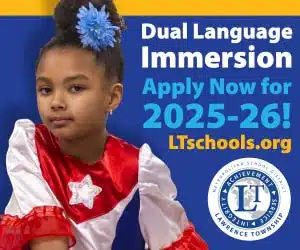Children spend most of their early lives learning. In fact, most kids spend anywhere from 800 to 1,000 hours on formal education each year. With that much time devoted to schooling, it’s no surprise that parents want their children to spend it studying a strong curriculum in the best possible environment. However, a setting that works for one student may not for another. To find a better academic fit, an increasing number of families are taking advantage of educational options available online.
For years, adults have been earning undergraduate and graduate degrees through online education programs, but now more junior high, high school and even elementary students are taking some or all of their classes online as well. According to the International Association for K-12 Online Learning (iNACOL), 310,000 kindergarten through 12th grade students were enrolled in online schools full-time in 2013-2014. This number represents a major increase from a decade ago, when just 40,000 to 50,000 students were enrolled in K-12 online education.
Why virtual schools?
Parents choose to educate a child at home using a virtual school for a variety of reasons, such as:
- A faster pace required for a student who needs challenged.
- A slower pace required for a child who needs extra time or support.
- A desire to have a safer environment free from bullying.
- The necessity of working around a unique schedule, for example an elite athlete or a student who travels frequently.
- Not thriving in a traditional educational setting and seeking an alternative type of learning environment.
“My son, Ethan, was diagnosed with Autism Spectrum Disorder, ODD and ADHD in February 2015,” says Chami Hughes. “His brick and mortar school was not working, so after many meetings to try to resolve the issues, we decided to check into Indiana Connections Academy virtual schooling.” Hughes says her fourth grader is excelling with online learning. Upon starting his virtual school, 10-year-old Ethan was evaluated to be given appropriate schoolwork as well as services to meet his needs. He received challenging lessons that were on his personal ability level and completed the year on the A Honor Roll with an overall grade of 98 percent.
“I would recommend Connections to anyone,” says Hughes. “They provide flexibility in scheduling, the staff is amazing and everything is on a very personal level. Someone is always accessible if you have questions. Interacting with teachers and classmates through Live Lessons as well as field trips was Ethan’s favorite part. I simply cannot praise them enough.”
How does it work?
With virtual school, children spend approximately 7 to 8 hours per day on their lessons, however with many programs only 25 percent of that time is actually spent on the computer. Although computers are a big part of online education, much of the actual work is completed in the same way as it is in a traditional school. Kids still read books, fill out worksheets, write papers, complete science experiments and take quizzes and tests. Many schools ship textbooks and other materials to students. It’s also important to note that often programs are tuition-free. Parents, frequently referred to as learning coaches, are required to work closely with their child, making sure he or she is completing their work. As students become older, more of this responsibility rests on them.
There are also other options outside of a total online curriculum. Hoosier Academies, for example, requires two full days in its physical learning center for hands-on lessons. The school says it believes virtual learning offers a great in-between option for families who don’t want to go the traditional route but also don’t feel comfortable homeschooling.
Another possibility is to use online school as a supplement to a child’s current traditional education. Allynn Swensen, Director of Indiana Virtual Academy, says, “We offer supplemental classes students might not find in their current schools, especially in more rural areas. Students can work through their current schools to take extra foreign language classes through us or other electives their schools may not offer. We also offer all the core classes students need to graduate.”
The online education model works well for many families, but parents should be prepared to do their research before signing up. What is the quality of the curriculum? What is the student-to-teacher ratio? How will students interact with one another? Do any opportunities exist for students to get together socially? Also, it’s important to remember that parental involvement is just as critical to a child’s success at a virtual school as it would be in a traditional school.






